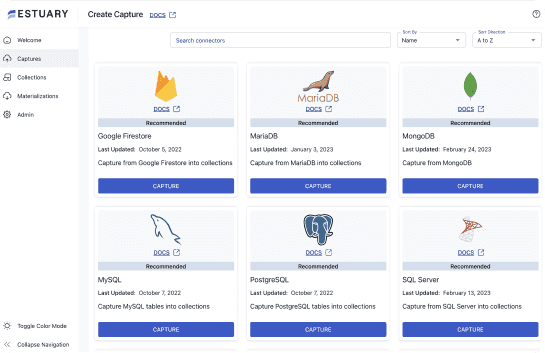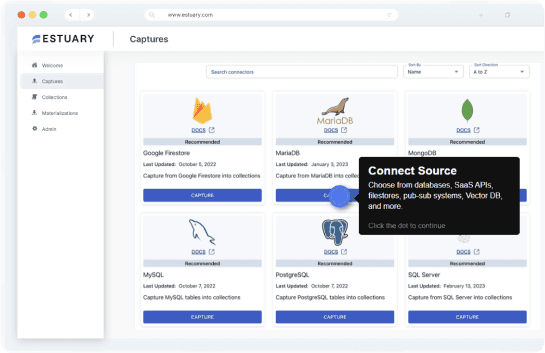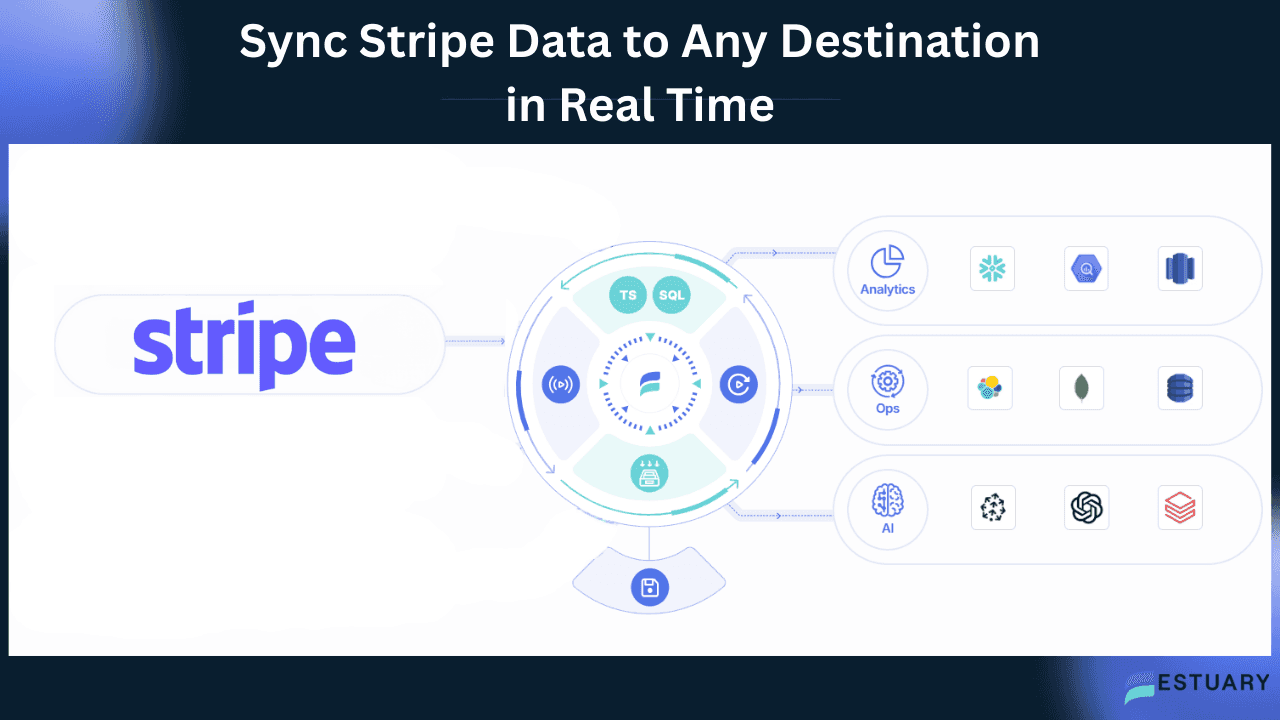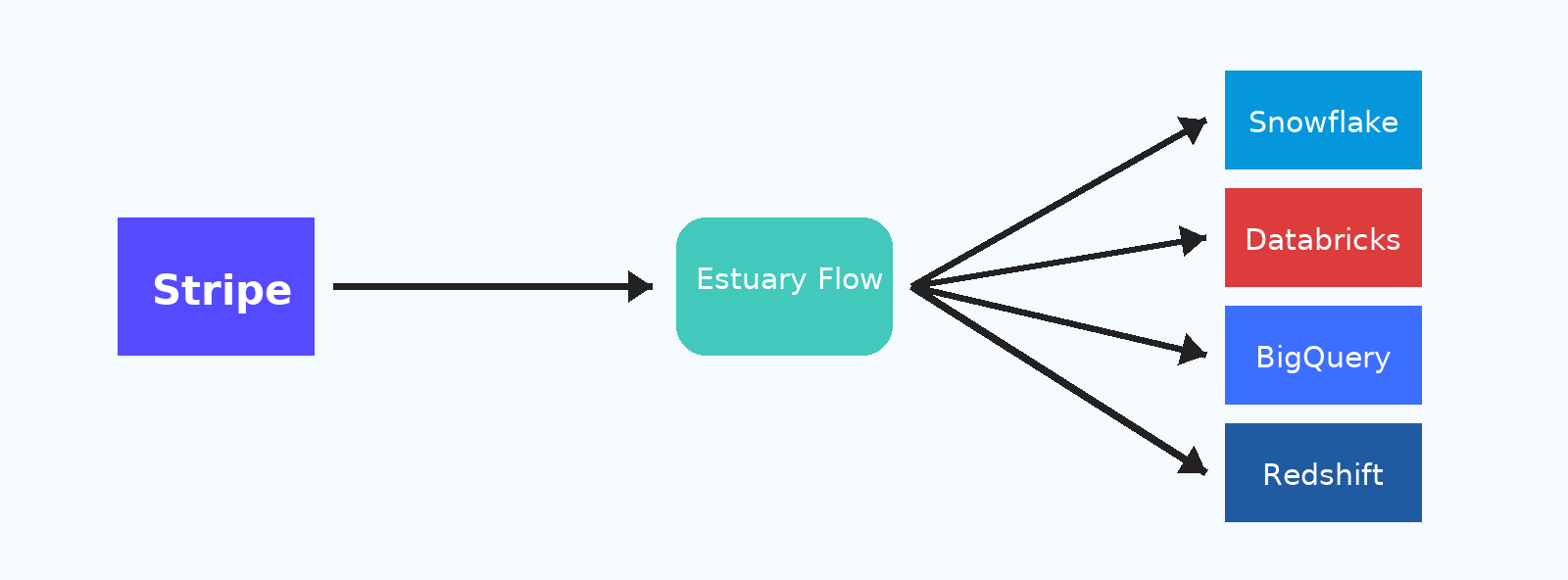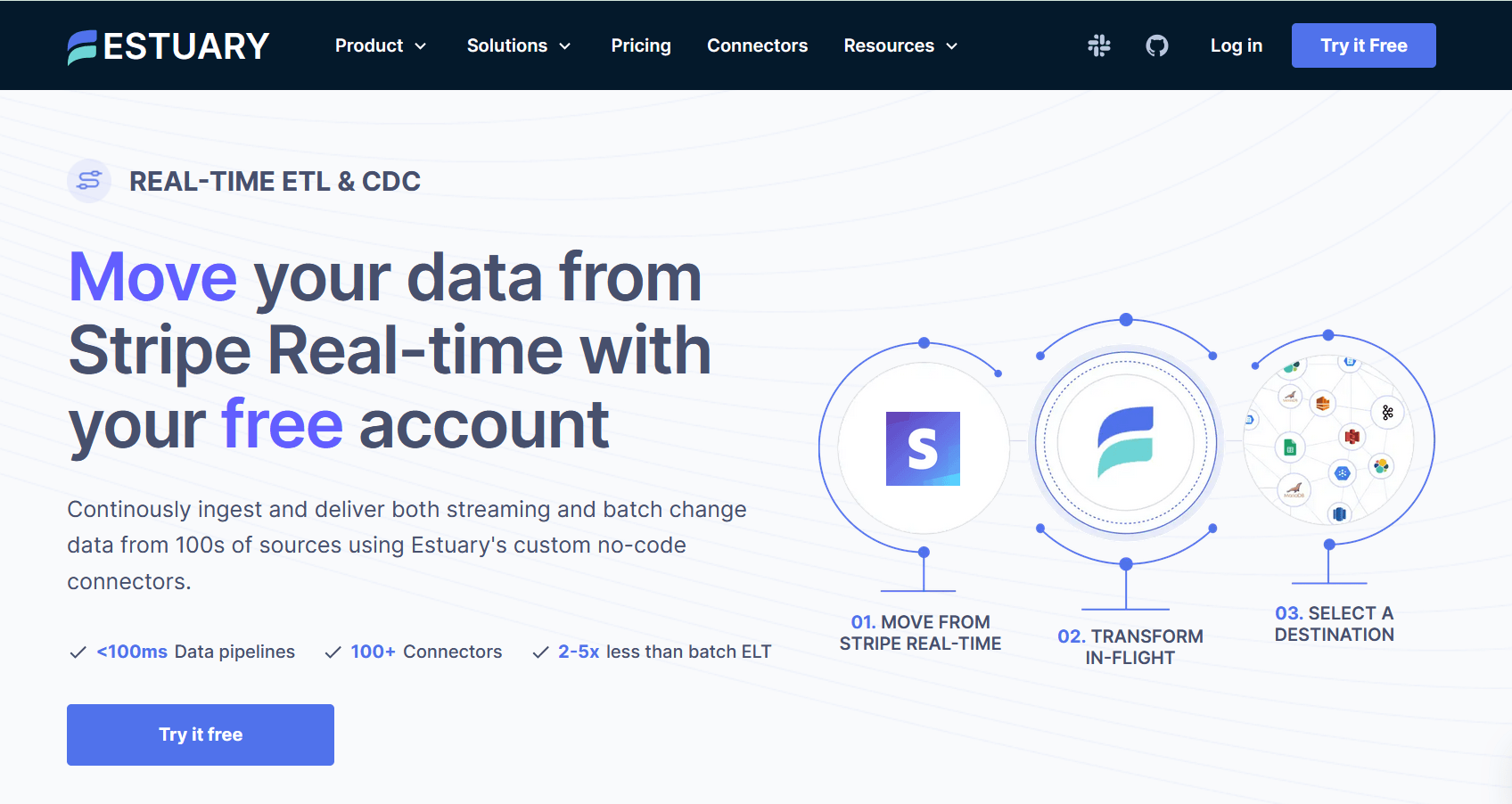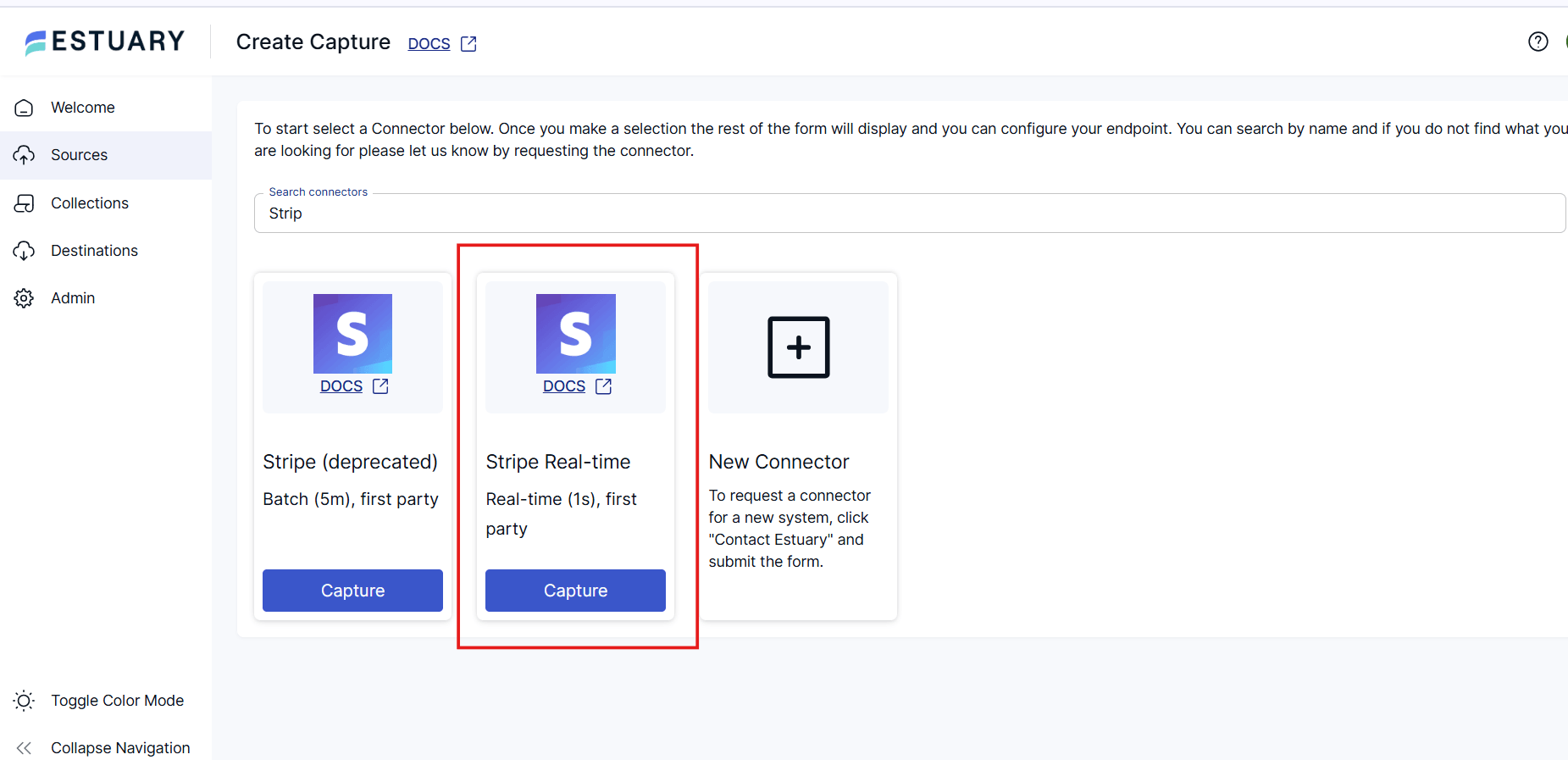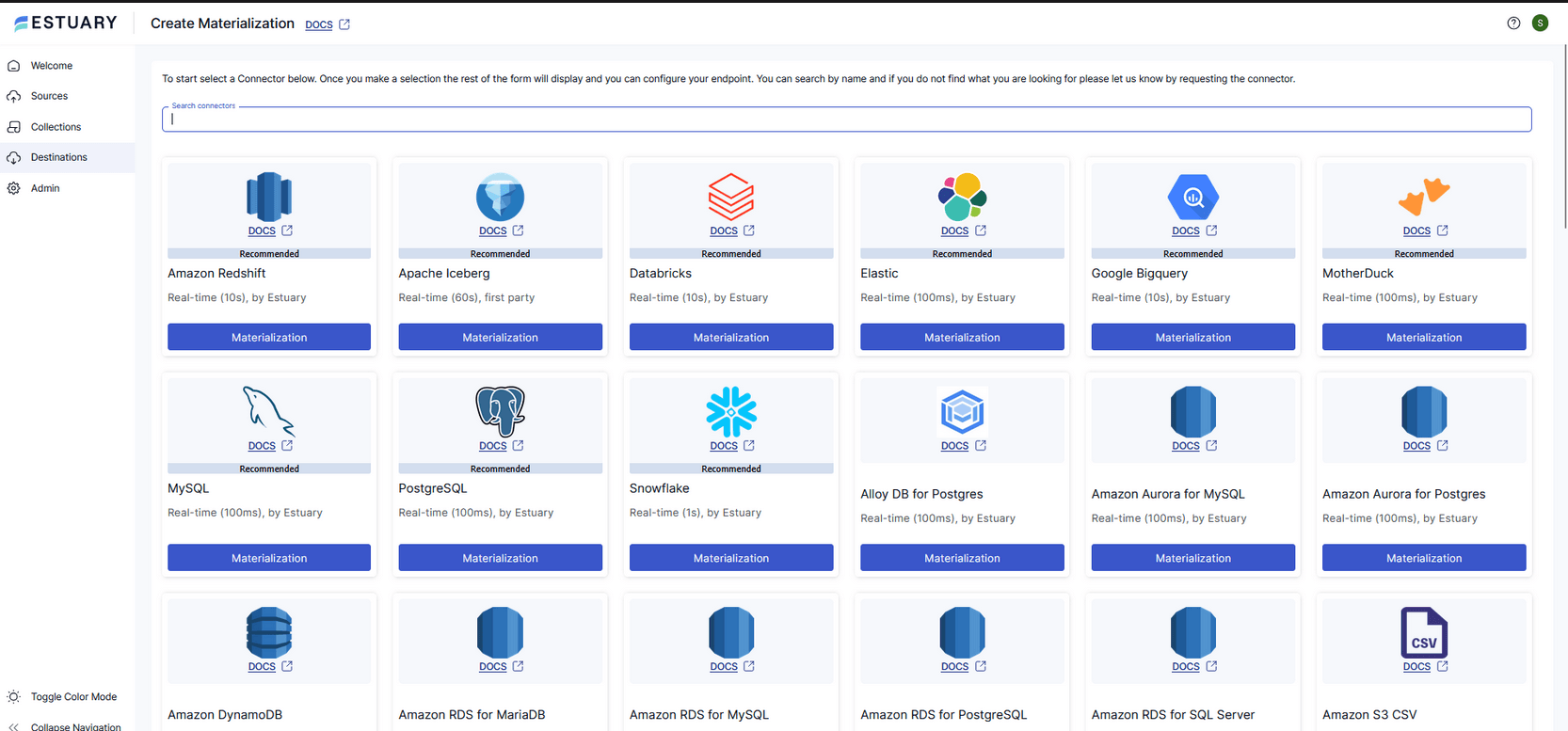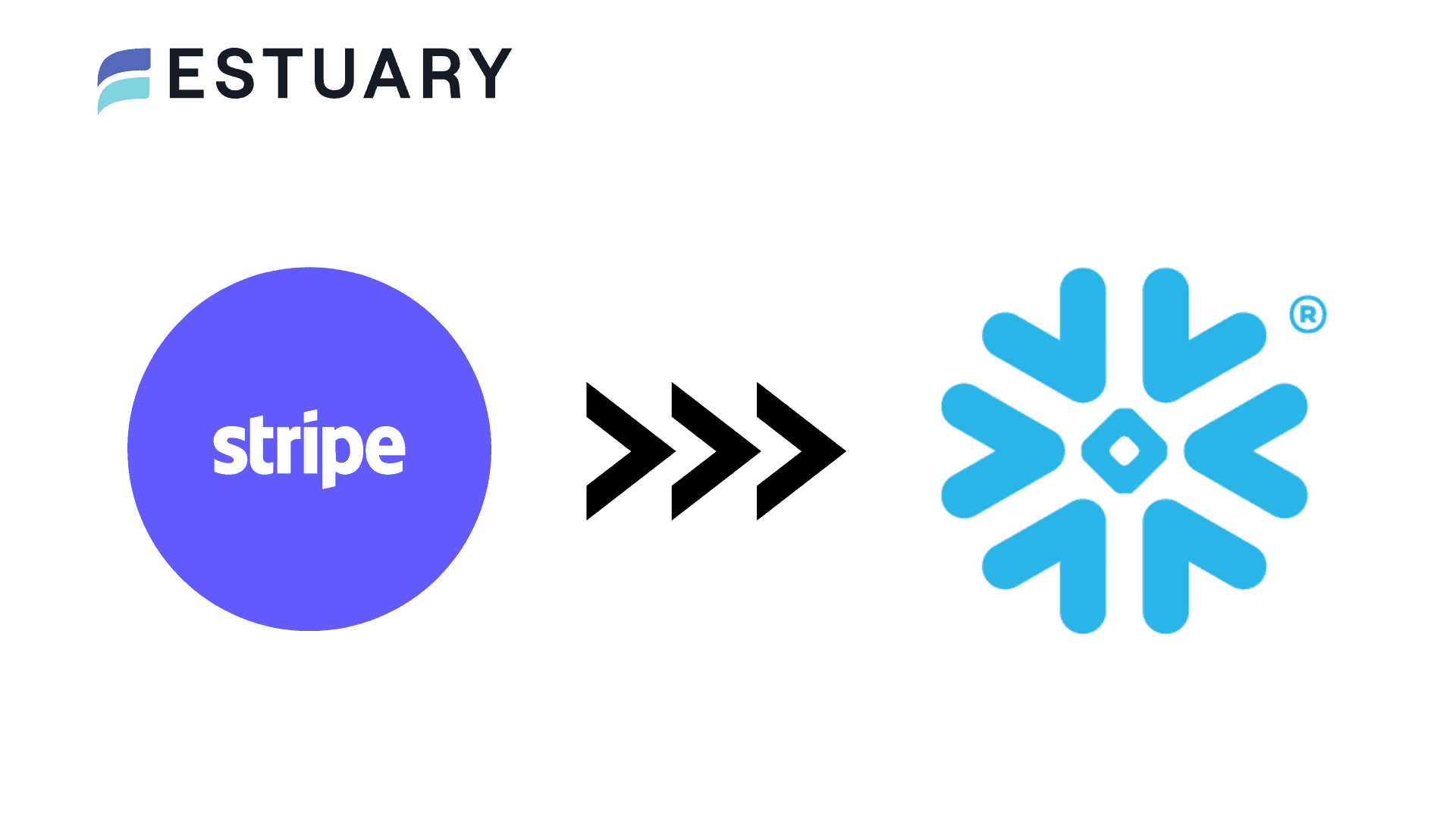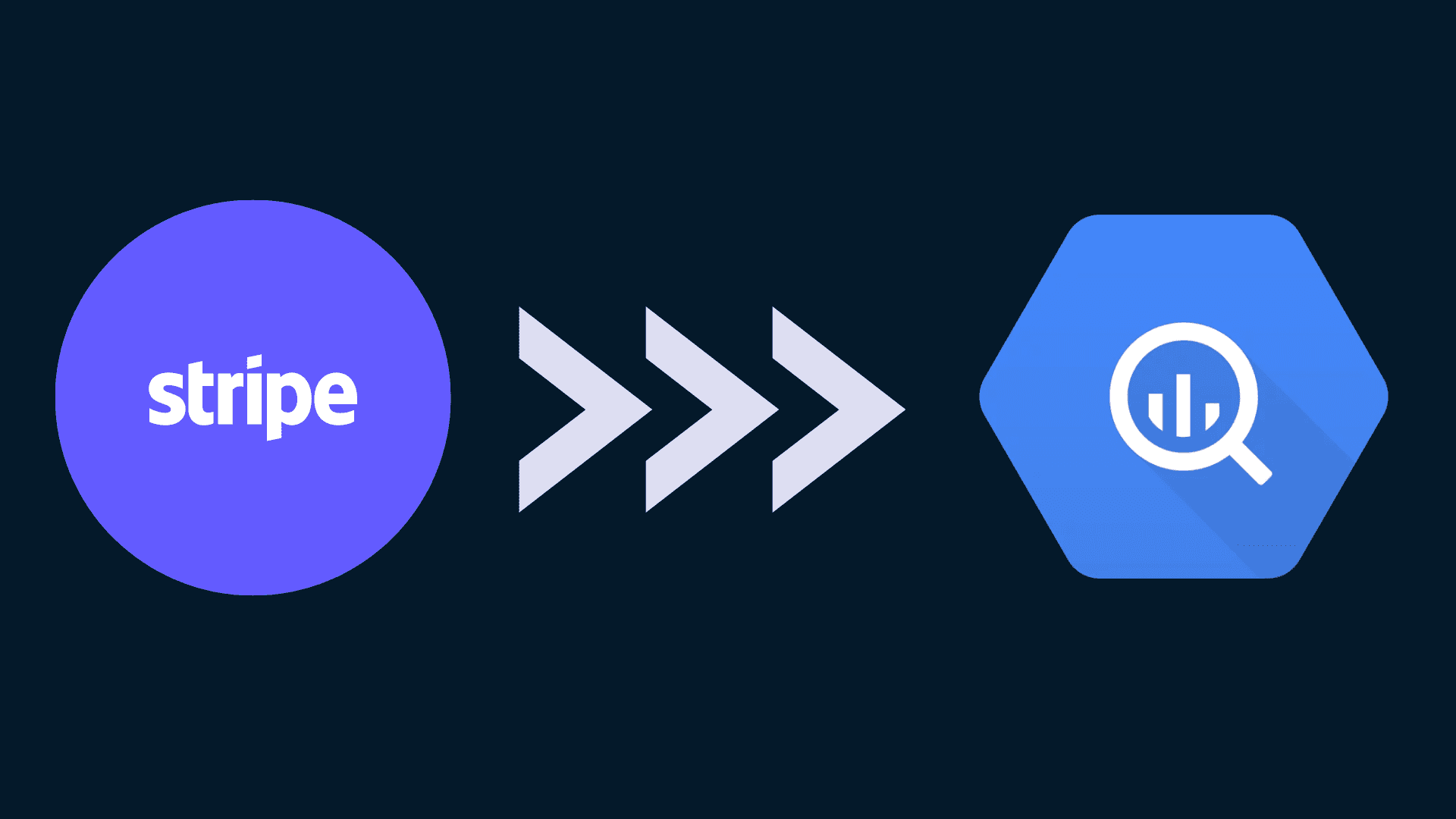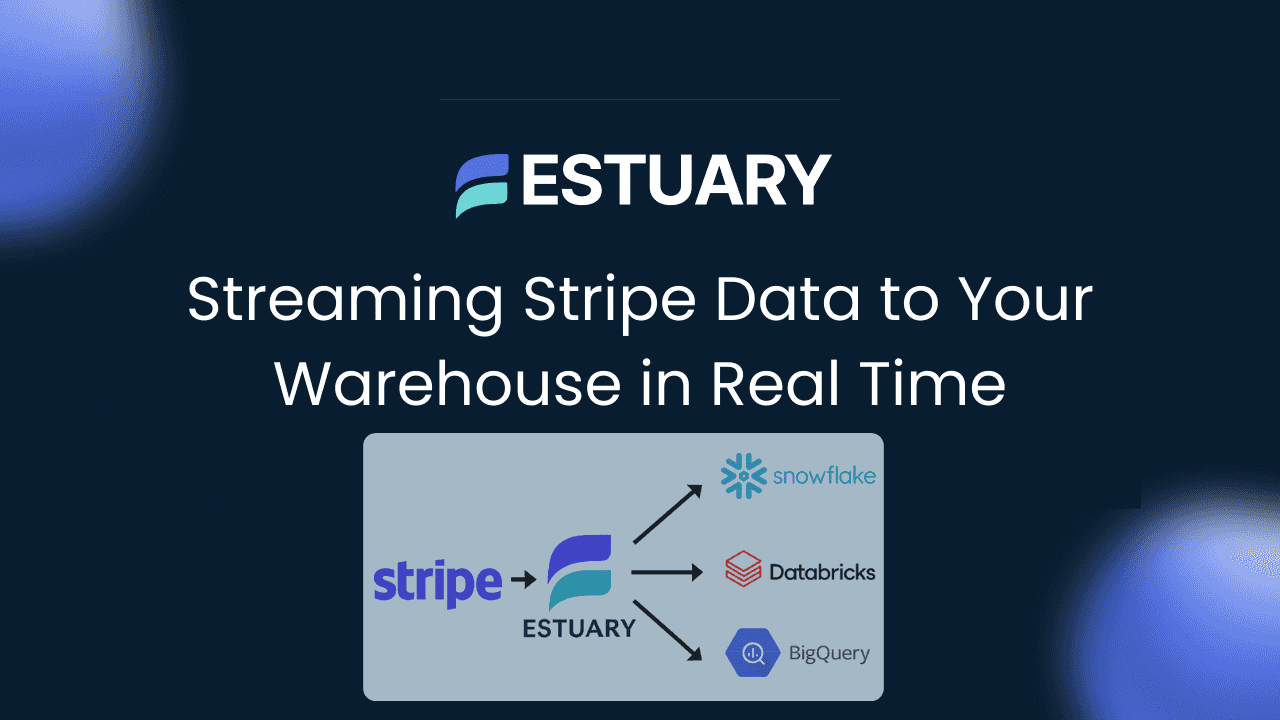
Stripe powers payments for millions of businesses, but its reporting and analytics tools only go so far. Teams often find themselves downloading CSVs from the Stripe dashboard and pasting them into spreadsheets or warehouses just to get a clearer picture of revenue, payouts, or subscriptions. This process is manual, time-consuming, and always leaves you with outdated data.
The better approach is to use Stripe integrations that keep your data flowing continuously into the systems where you need it most. By setting up a real-time pipeline, you can sync Stripe data to warehouses, spreadsheets, BI tools, or even data lakes — unlocking instant reporting and deeper insights without manual effort.
In this guide, we’ll walk through how to connect Stripe to any destination using Estuary Flow. You’ll learn why these integrations matter, how they work, the most popular destinations, and where to start. Along the way, we’ll link to detailed step-by-step tutorials so you can implement the setup that fits your business today.
Key Takeaways
- Stripe integrations allow you to move payment data beyond the Stripe dashboard and into the tools your teams already use.
- With Estuary Flow, you can sync Stripe data in real time to destinations such as Google Sheets, Snowflake, BigQuery, Redshift, and Databricks.
- You can also connect Stripe to BI platforms (Looker, Tableau, Power BI) or data lakes (Iceberg, Delta Lake, DuckLake) for advanced analytics.
- Real-time pipelines eliminate manual exports, reduce errors, and keep your financial data always up to date.
- Each destination serves different needs — lightweight dashboards in Sheets, scalable analytics in warehouses, or flexible storage in data lakes.
Why Integrate Stripe With Other Tools?
On its own, Stripe is excellent for processing payments and viewing basic metrics. But most businesses quickly outgrow the reporting Stripe provides in its dashboard. Exporting CSVs for analysis only goes so far.
By setting up a Stripe integration, you unlock new possibilities:
- Centralize your data: Combine payments with customer, product, or marketing data in a single destination for a complete business view.
- Real-time visibility: Monitor charges, subscriptions, and refunds the moment they happen instead of waiting for manual reports.
- Advanced analytics: Use warehouses or BI tools to build forecasts, customer lifetime value models, or churn analyses powered by live data.
- Compliance and audits: Keep an immutable history of every transaction in secure storage, ensuring accuracy for financial reporting.
- Collaboration across teams: Sync Stripe to Google Sheets or BI dashboards so finance, operations, and support teams always work with fresh numbers.
In short, a Stripe integration helps you move from reactive, manual reporting to proactive, data-driven decision-making.
How Stripe Integrations Work (High-Level Architecture)
At its core, every Stripe integration follows the same simple flow:
Stripe → Estuary Flow → Destination
- Stripe continuously generates events like charges, invoices, subscriptions, payouts, and refunds.
- Estuary Flow captures these events in real time and organizes them into collections.
- Destination could be a warehouse, spreadsheet, BI platform, or data lake. Flow materializes the data into that system so it stays updated automatically.
This architecture ensures that you don’t just move data once — you keep it synced in real time.
With this approach, your payment data is always where you need it, ready to be combined with other sources for analytics and reporting.
Popular Stripe Integration Destinations
Every business has different needs for Stripe data. Some teams want quick spreadsheets, others need enterprise-scale analytics, and some prefer flexible storage in data lakes. With Estuary Flow, you can connect Stripe to any of these destinations in real time.
1. Stripe to Google Sheets
- Best for finance and operations teams who need lightweight dashboards, payout tracking, or dispute logs.
- Data appears directly in a familiar spreadsheet environment, making it easy to share and collaborate.
- 👉 Tutorial: How to Sync Stripe to Google Sheets in Real Time
2. Stripe to Data Warehouses
- Ideal for companies that want to centralize Stripe with other data sources for advanced analytics and BI.
- Supported warehouses include Snowflake, BigQuery, Redshift, and Databricks.
- 👉 Tutorial: Stream Stripe Data to a Warehouse
3. Stripe to BI Tools
- Connect Stripe to platforms like Looker, Tableau, and Power BI for interactive dashboards and executive reporting.
- Perfect for data teams who want to visualize real-time revenue, churn, or LTV models.
4. Stripe to Data Lakes and Open Table Formats
- Use Iceberg, Delta Lake, or DuckLake to store Stripe data in open formats for long-term analysis.
- Useful for teams building data lakehouses or handling very large transaction histories.
5. Stripe to Databases
- Send Stripe data to operational databases like PostgreSQL, MySQL, or MongoDB.
- Great for embedding payment info directly into customer-facing applications.
With Estuary Flow, each of these setups uses the same core pipeline: Stripe → Flow → Destination. You only need to configure it once, then choose where to materialize the data.
Benefits of Using Estuary Flow for Stripe Integrations
While there are many ways to move data out of Stripe, most involve batch exports, complex scripts, or third-party tools that can be slow and fragile. Estuary Flow was built to make Stripe integrations both powerful and simple.
Why Estuary Flow stands out:
- Real-time sync: Capture every charge, subscription, or refund the moment it happens and see it in your chosen destination within seconds.
- Multiple destinations: Use the same Stripe capture to power Google Sheets for finance teams, a warehouse for analytics, and BI tools for executives in parallel.
- Schema enforcement: Flow ensures consistent, schema-validated data so changing Stripe APIs do not break your pipeline.
- Exactly-once delivery: Transactions are applied once and only once, preventing duplicates in your reports.
- No-code setup: OAuth for Google Sheets or a Stripe API key is all you need. No scripts or engineering hours required.
- Flexible deployments: Use Estuary as SaaS, private deployment, or bring-your-own-cloud for compliance-sensitive environments.
By using Flow, you do not just connect Stripe to a single tool. You build a scalable pipeline that grows with your business.
Getting Started With Stripe Integrations
Setting up a Stripe integration with Estuary Flow takes only a few minutes. The process is the same no matter which destination you choose.
- Capture Stripe data
- In the Flow web app, go to Sources and create a new capture using the Stripe Real-time connector.
- Provide your Stripe API key and optional settings such as start date or connected accounts.
- Choose your destination
- Go to Destinations and create a new materialization.
- Select Google Sheets, Snowflake, BigQuery, Databricks, or any of the other supported connectors.
- Validate the sync
- Once you publish the materialization, data begins flowing immediately.
- Open your destination system and confirm that new charges, invoices, or refunds appear in near real time.
From here, you can add additional destinations without reconfiguring Stripe. The same capture can feed multiple systems at once, giving every team the view of Stripe data they need.
👉 Want to follow along step by step? Check out the Estuary Quickstart Guide.
Conclusion
Your Stripe data holds the key to understanding revenue, customer behavior, and business health. But if it lives only in the Stripe dashboard or in exported CSVs, you are always working with stale numbers. With Stripe integrations powered by Estuary Flow, you can connect Stripe to Google Sheets, data warehouses, BI platforms, or data lakes in real time.
Whether your team needs lightweight dashboards in Sheets, enterprise-scale analytics in Snowflake or BigQuery, or flexible storage in Iceberg or Delta Lake, Estuary Flow makes it simple to capture and sync Stripe data automatically. No scripts, no delays, and no manual exports.
Start small with a spreadsheet or go big with a warehouse — either way, your data stays live, accurate, and ready for action.
Get Started with Stripe Integrations
- 👉 Try it now: Sign up for Estuary Flow and start syncing Stripe data in minutes.
- 👉 See proof in action: Explore our success stories
- 👉 Talk to us: Need help choosing the right destination? Contact us and we will guide you.
- 👉 Join the community: Connect with data engineers and Estuary users in our Slack community.
FAQs
How fast does data sync from Stripe to my destination?
What are the most common ways to connect Stripe to a warehouse?

About the author
Dani is a data professional with a rich background in data engineering and real-time data platforms. At Estuary, Daniel focuses on promoting cutting-edge streaming solutions, helping to bridge the gap between technical innovation and developer adoption. With deep expertise in cloud-native and streaming technologies, Dani has successfully supported startups and enterprises in building robust data solutions.

